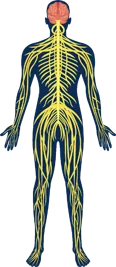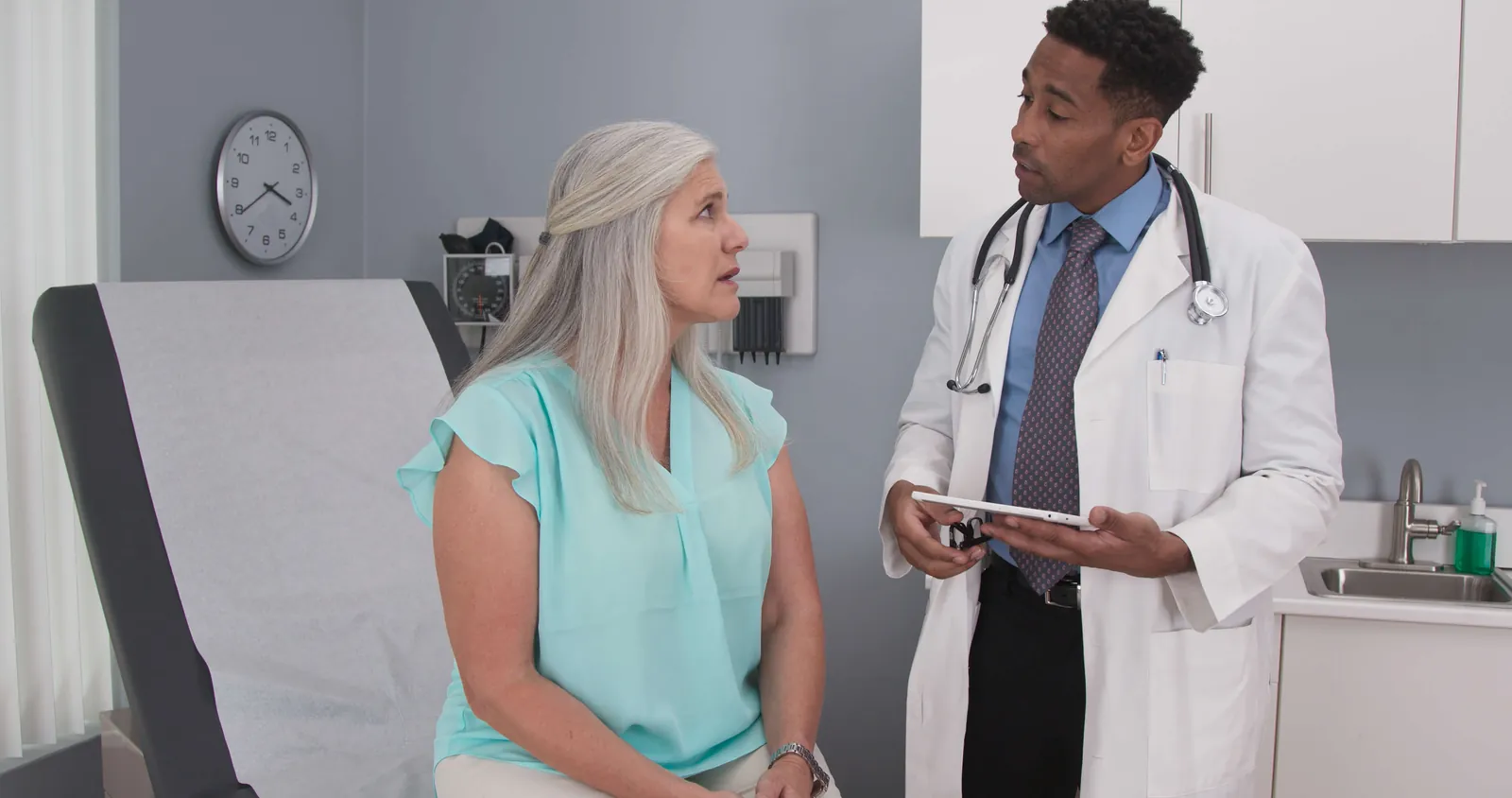- Home
- Browse by Disease
- Hemangioblastoma
Questions about rare diseases?
Questions about rare diseases?
Disease at a Glance
Summary
A Hemangioblastoma is a benign, highly vascular tumor that can occur in the brain, spinal cord, and retina (the light-sensitive tissue that lines the back of the eye). This tumor accounts for about 2% of brain tumors. As it enlarges, it presses on the brain and can cause neurological symptoms, such as headaches, weakness, sensory loss, balance and coordination problems, and/or hydrocephalus (a buildup of spinal fluid in the brain). Most Hemangioblastomas occur sporadically. However, some people develop Hemangioblastomas as part of a genetic syndrome called von Hippel-Lindau syndrome. These people usually develop multiple tumors within the brain and spinal cord over their lifetime.
Summary
A Hemangioblastoma is a benign, highly vascular tumor that can occur in the brain, spinal cord, and retina (the light-sensitive tissue that lines the back of the eye). This tumor accounts for about 2% of brain tumors. As it enlarges, it presses on the brain and can cause neurological symptoms, such as headaches, weakness, sensory loss, balance and coordination problems, and/or hydrocephalus (a buildup of spinal fluid in the brain). Most Hemangioblastomas occur sporadically. However, some people develop Hemangioblastomas as part of a genetic syndrome called von Hippel-Lindau syndrome. These people usually develop multiple tumors within the brain and spinal cord over their lifetime.A Hemangioblastoma is a benign, highly vascular tumor that can occur in the brain, spinal cord, and retina (the light-sensitive tissue that lines the back of the eye). This tumor accounts for about 2% of brain tumors. As it enlarges, it presses on the brain and can cause neurological symptoms, such as headaches, weakness, sensory loss, balance and coordination problems, and/or hydrocephalus (a buildup of spinal fluid in the brain). Most Hemangioblastomas occur sporadically. However, some people develop Hemangioblastomas as part of a genetic syndrome called von Hippel-Lindau syndrome. These people usually develop multiple tumors within the brain and spinal cord over their lifetime.
Resource(s) for Medical Professionals and Scientists on This Disease:
- Orphanet provides GARD with information for this disease.
About Hemangioblastoma
Many rare diseases have limited information. Currently, GARD aims to provide the following information for this disease:
- Population Estimate:This section is currently indevelopment.
- Symptoms:May start to appear as an Adult.
- Organizations:Patient organizations are available to help find a specialist, or advocacy and support for this specific disease.
- Categories:Cancer
Neurological Diseases
When Do Symptoms of Hemangioblastoma Begin?
Symptoms of this disease may start to appear as an Adult.
The age symptoms may begin to appear differs between diseases. Symptoms may begin in a single age range, or during several age ranges. The symptoms of some diseases may begin at any age. Knowing when symptoms may have appeared can help medical providers find the correct diagnosis.
The age symptoms may begin to appear differs between diseases. Symptoms may begin in a single age range, or during several age ranges. The symptoms of some diseases may begin at any age. Knowing when symptoms may have appeared can help medical providers find the correct diagnosis.
Prenatal
Before Birth
Newborn
Birth-4 weeks
Infant
1-23 months
Child
2-11 years
Adolescent
12-18 years
Adult Selected
19-65 years
Older Adult
65+ years
Symptoms may start to appear as an Adult.
Symptoms
The types of symptoms experienced, and their intensity, may vary among people with this disease. Your experience may be different from others. Consult your health care team for more information.
The following describes the symptom(s) associated with this disease along with the corresponding body system(s), description, synonyms, and frequency (Note: Not all possible symptoms may be listed):
The following describes the symptom(s) associated with this disease along with the corresponding body system(s), description, synonyms, and frequency (Note: Not all possible symptoms may be listed):
Nervous System Nervous System
16 Symptoms
16 Symptoms

Nervous System
The nervous system is made up of the brain, spinal cord, and nerves. Common symptoms of problems in the nervous system include trouble moving, speaking, swallowing, breathing, or learning. Problems with memory, senses, or mood may also occur. Nervous system diseases are usually diagnosed and treated by neurologists.
16 Symptoms
Causes
GARD does not currently have information about the cause of this disease.
Find Your Community
How Can Patient Organizations Help?
Patient organizations can help patients and families connect. They build public awareness of the disease and are a driving force behind research to improve patients' lives. They may offer online and in-person resources to help people live well with their disease. Many collaborate with medical experts and researchers.
Services of patient organizations differ, but may include:
- Ways to connect to others and share personal stories
- Easy-to-read information
- Up-to-date treatment and research information
- Patient registries
- Lists of specialists or specialty centers
- Financial aid and travel resources
Please note: GARD provides organizations for informational purposes only and not as an endorsement of their services. Please contact an organization directly if you have questions about the information or resources it provides.
View GARD's criteria for including patient organizations, which can be found under the FAQs on our About page. Request an update or to have your organization added to GARD.


Patient Organizations
6 Organizations
Organization Name
Who They Serve
Helpful Links
Country
People With
Hemangioblastoma
Helpful Links
Country
United States
Participating in Clinical Studies
Clinical studies are part of clinical research and play an important role in medical advances, including for rare diseases. Through clinical studies, researchers may ultimately uncover better ways to treat, prevent, diagnose, and understand human diseases.

What Are Clinical Studies?
Clinical studies are medical research involving people as participants. There are two main types of clinical studies:
- Clinical trials determine if a new test or treatment for a disease is effective and safe by comparing groups receiving different tests/treatments.
- Observational studies involve recording changes over time among a specific group of people in their natural settings.
Why Participate in Clinical Studies?
People participate in clinical trials for many reasons. People with a disease may participate to receive the newest possible treatment and additional care from clinical study staff as well as to help others living with the same or similar disease. Healthy volunteers may participate to help others and to contribute to moving science forward.
To find the right clinical study we recommend you consult your doctors, other trusted medical professionals, and patient organizations. Additionally, you can use ClinicalTrials.gov to search for clinical studies by disease, terms, or location.
What if There Are No Available Clinical Studies?
ResearchMatch helps connect people interested in research studies with researchers from top medical centers across the United States. Anyone from the U.S. can register with this free program funded by NIH. Researchers from participating institutions use the database to search for and invite patients or healthy volunteers who meet their study criteria to participate.
Join the All of Us Research Program!
The All of Us Research Program is inviting 1 million people from all backgrounds across the U.S. to help build one of the most diverse health databases in history. Researchers will use the data to learn how our biology, lifestyle, and environment affect health. This may one day help them find ways to treat and prevent diseases.
What Are Clinical Studies?
Clinical studies are medical research involving people as participants. There are two main types of clinical studies:
- Clinical trials determine if a new test or treatment for a disease is effective and safe by comparing groups receiving different tests/treatments.
- Observational studies involve recording changes over time among a specific group of people in their natural settings.
Why Participate in Clinical Studies?
People participate in clinical trials for many reasons. People with a disease may participate to receive the newest possible treatment and additional care from clinical study staff as well as to help others living with the same or similar disease. Healthy volunteers may participate to help others and to contribute to moving science forward.
To find the right clinical study we recommend you consult your doctors, other trusted medical professionals, and patient organizations. Additionally, you can use ClinicalTrials.gov to search for clinical studies by disease, terms, or location.
To find the right clinical study we recommend you consult your doctors, other trusted medical professionals, and patient organizations. Additionally, you can use ClinicalTrials.gov to search for clinical studies by disease, terms, or location.
What if There Are No Available Clinical Studies?
ResearchMatch helps connect people interested in research studies with researchers from top medical centers across the United States. Anyone from the U.S. can register with this free program funded by NIH. Researchers from participating institutions use the database to search for and invite patients or healthy volunteers who meet their study criteria to participate.
Join the All of Us Research Program!
The All of Us Research Program is inviting 1 million people from all backgrounds across the U.S. to help build one of the most diverse health databases in history. Researchers will use the data to learn how our biology, lifestyle, and environment affect health. This may one day help them find ways to treat and prevent diseases.
ClinicalTrials.gov, an affiliate of NIH, provides current information on clinical research studies in the United States and abroad. Talk to a trusted doctor before choosing to participate in any clinical study. We recommend checking this site often and searching for studies with related terms/synonyms to improve results.
GARDGenetic and Rare Diseases
Information Center
Information Center
Contact a GARD Information Specialist if you need help finding more information on this rare disease or available clinical studies. Please note that GARD cannot enroll individuals in clinical studies.
Available toll-free Monday through Friday from 12 pm to 6 pm Eastern Time
(Except: Federal Holidays)
(Except: Federal Holidays)
ClinicalTrials.gov, an affiliate of NIH, provides current information on clinical research studies in the United States and abroad. Talk to a trusted doctor before choosing to participate in any clinical study. We recommend checking this site often and searching for studies with related terms/synonyms to improve results.
GARDGenetic and Rare Diseases
Information Center
Information Center
Contact a GARD Information Specialist if you need help finding more information on this rare disease or available clinical studies. Please note that GARD cannot enroll individuals in clinical studies.
Use the contact form to send your questions to a GARD Information Specialist.
Please allow 2 to 10 business days for us to respond.
Please allow 2 to 10 business days for us to respond.
Getting a Diagnosis
Take steps toward getting a diagnosis by working with your doctor, finding the right specialists, and coordinating medical care.
GARD collects data from a variety of sources to populate its website and provide accurate and reliable information on rare diseases.
GARD uses data collected from Orphanet and Online Mendelian Inheritance in Man (OMIM) to interpret and provide information on rare diseases. This includes names, synonyms, genes, symptom frequency, population estimates and more.
GARD uses data collected from Orphanet and Online Mendelian Inheritance in Man (OMIM) to interpret and provide information on rare diseases. This includes names, synonyms, genes, symptom frequency, population estimates and more.
- Orphanet is an online database of rare diseases and orphan drugs that provides aggregated data coordinated by INSERM-US14 in Paris.
- OMIM is a database of human genes and genetic phenotypes authored and edited at the McKusick-Nathans Institute of Genetic Medicine , Johns Hopkins University School of Medicine.
Last Updated: September 2024